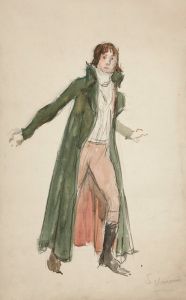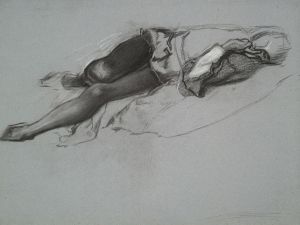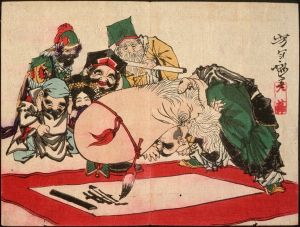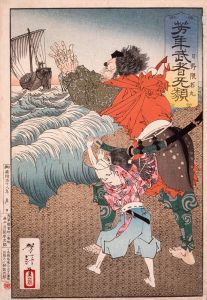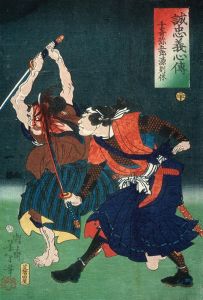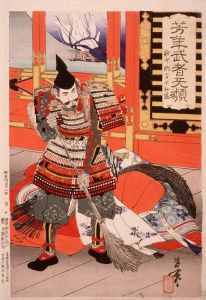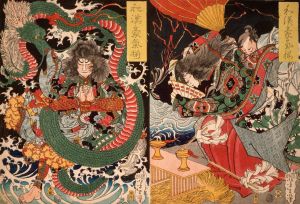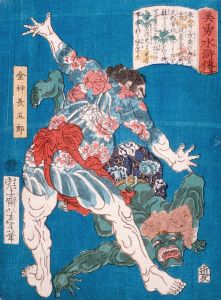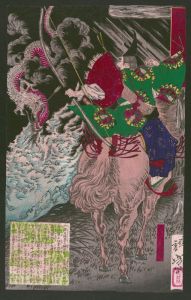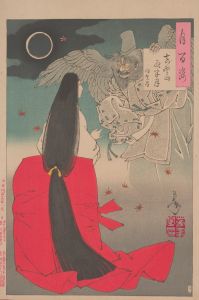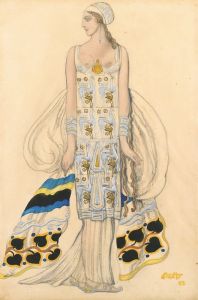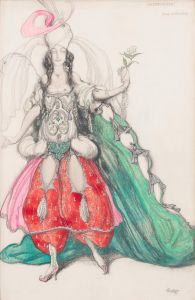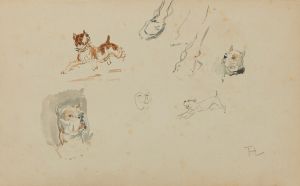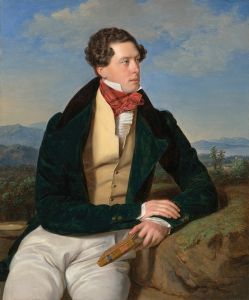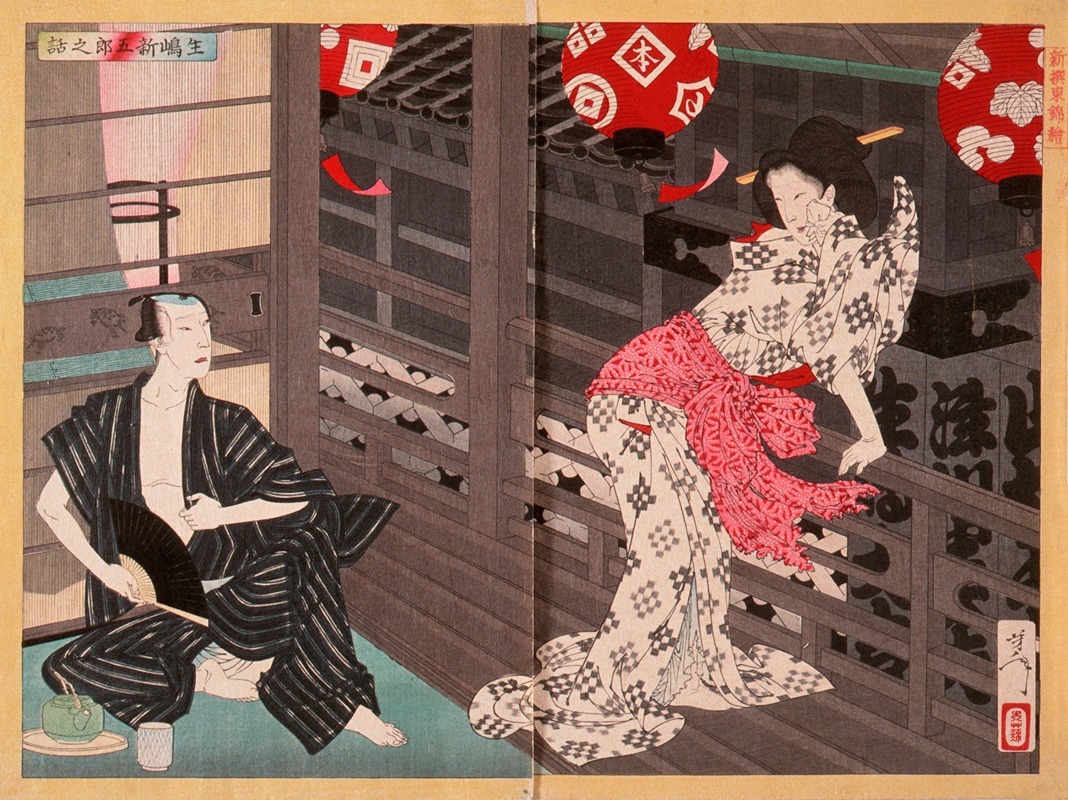
Lady Ejima and the Actor Ikushima Shingorō
A hand-painted replica of Tsukioka Yoshitoshi’s masterpiece Lady Ejima and the Actor Ikushima Shingorō, meticulously crafted by professional artists to capture the true essence of the original. Each piece is created with museum-quality canvas and rare mineral pigments, carefully painted by experienced artists with delicate brushstrokes and rich, layered colors to perfectly recreate the texture of the original artwork. Unlike machine-printed reproductions, this hand-painted version brings the painting to life, infused with the artist’s emotions and skill in every stroke. Whether for personal collection or home decoration, it instantly elevates the artistic atmosphere of any space.
"Lady Ejima and the Actor Ikushima Shingorō" is a woodblock print by the renowned Japanese artist Tsukioka Yoshitoshi, who was active during the late Edo and early Meiji periods. Yoshitoshi is celebrated for his innovative approach to ukiyo-e, a genre of Japanese art that flourished from the 17th through the 19th centuries. Ukiyo-e, which translates to "pictures of the floating world," often depicted scenes from history, folklore, kabuki theater, and the lives of common people.
This particular print is part of Yoshitoshi's series "Thirty-Six Ghosts" (also known as "New Forms of Thirty-Six Ghosts"), which was published between 1889 and 1892. The series is known for its imaginative and sometimes eerie depictions of supernatural themes, drawing from Japanese folklore, literature, and historical events. Yoshitoshi's work in this series is characterized by its dynamic composition, vivid colors, and intricate details, reflecting both traditional techniques and the influence of Western art.
The print "Lady Ejima and the Actor Ikushima Shingorō" portrays a historical scandal involving Lady Ejima, a lady-in-waiting at the Edo Castle, and the kabuki actor Ikushima Shingorō. The incident, known as the Ejima-Ikushima affair, took place in the early 18th century during the Edo period. Lady Ejima was a high-ranking attendant to a shogun's wife, and her involvement with the actor Ikushima Shingorō led to a significant scandal.
The affair was discovered when Lady Ejima attended a kabuki performance featuring Ikushima Shingorō, which was considered inappropriate for someone of her status. The scandal resulted in severe repercussions for both parties. Lady Ejima was exiled, and Ikushima Shingorō faced punishment as well. This incident is often cited as an example of the strict social codes and the rigid class structures of the Edo period.
Yoshitoshi's depiction of this event captures the tension and drama of the scandal. His portrayal of Lady Ejima and Ikushima Shingorō reflects his skill in conveying emotion and narrative through visual art. The print is notable for its attention to detail, particularly in the rendering of the characters' expressions and the elaborate costumes, which are typical of Yoshitoshi's style.
Tsukioka Yoshitoshi's work, including this print, is highly regarded for its artistic merit and its ability to convey complex stories and emotions. His contributions to the ukiyo-e genre have left a lasting impact on Japanese art, and his prints continue to be studied and appreciated for their historical and cultural significance.
"Lady Ejima and the Actor Ikushima Shingorō" serves as a fascinating example of how art can capture and comment on historical events, offering insight into the cultural and social dynamics of the time. Yoshitoshi's work remains a valuable resource for understanding the interplay between art, history, and society in Japan during the transition from the Edo to the Meiji period.





